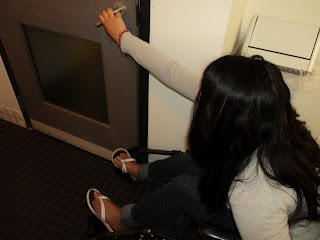Bathroom Project
This bathroom project, as the previous kitchen project, was
challenging and new to me. Designing a bathroom that meets ADA standards, while
still keeping it aesthetically pleasing and incorporating my design concept is
a challenging thing to do, yet the struggle made me realize and learn more about
design, especially bathroom design.
This bathroom is part of St. Elmo Hotel, Palouse, apartments,
and it is located in the same place as the kitchen, below. It is important to
carry the design aspects of the kitchen to achieve a harmonious and holistic
design in the entire apartment.
As I mentioned before, this is my very first time designing
a bathroom, and it is incredible to see the amount of information, specific standards
for bathroom design, that I learned in such a short period of time. I built my knowledge
by first learning about bathroom design through reading and keeping a record of
that information, which later I put into practice. I designed around the ADA standards
and sustainability, some people might see this as a challenge, yet this is when
true inspiration and creativity kick in, to please the client and produce a
functional and aesthetically pleasing design. The client asked to re-use the
most possible of the materials in the building, this is when I decided to use
lath, one of the most abundant materials in the site, in one of my bathroom
walls, it became the main wall, representing the key element of the project,
sustainability.
It is amazing to see my design transform, from a parti
sketch, a concept model, to later develop into a bathroom design. It is fun to
see the transition from my kitchen design to the bathroom, how the use of
different materials and location does not affect the cohesive relationship
between the two.
Bathroom Project Poster
It is very important that, after all our hard work and effort,
this information is presented in a clear and readable manner. It is important
for the client to visually see and understand all the phases of the project.
For this poster everything was drafted, and then all the work was scanned and
arranged in InDesign to produce a digital poster.
Volumetric Bathroom Model
 |
 In this image elements in the shower can be appreciated, a 5' turn radius allows a wheel chair to enter the shower. The toilet is also ADA accessible, allowing a side approach!
In this image elements in the shower can be appreciated, a 5' turn radius allows a wheel chair to enter the shower. The toilet is also ADA accessible, allowing a side approach!





















